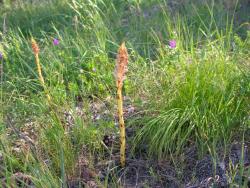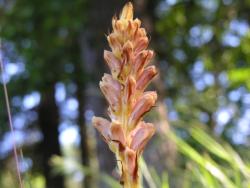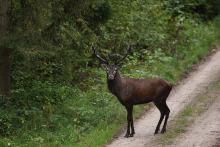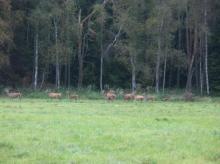 Asset Publisher
Asset Publisher
Polish forests
Poland is in the European lead, while concerning the area of all forests. They cover about 29,2 % of the country territory, and grow within the area of 9,1 million hectares. The overwhelming majority of the forests is state owned, of which almost 7,6 million hectares are managed by the State Forests National Forest Holding..
The number of Polish forest is still growing. The forestation rate of the country has increased from 21 % in 1945 to 29,2 % at the moment. Between 1995 and 2008, the forest area increased by 310 thousand ha. The basis for afforestation works is the "National Programme for Increasing the Forest Cover" (KPZL), assuming an increase of the forestation rate up to 30 % by 2020 and up to 33 % by 2050. Polish forests abound in flora, fauna and fungi. 65 % of the total number of animal species live there.
The forests grow in our country on poor soils, mainly because of the development of the agriculture in previous years. It influences the distribution of the types of the forest sites in Poland. Over 55 % of the forest areas is covered with coniferous forests. In other areas, there are forest sites, mainly the mixed ones. Their small part constitute alder and riparian forests – not more than 3 %.
In the years 1945 – 2011 the area of natural deciduous tree stands within the area of the State Forests National Forest Holding increased from 13 to 28,2 %.
Within the lowlands and uplands the most often occurring tee species is pine. It covers 64,3 % of the forest area of the State Forests National Forest Holding and 57,7 % of private and commune forests. In the mountains the predominant species is European spruce ( in the west) and European spruce with beech (in the east). Domination of pine is the result of carrying on sustainable forest management in the past. Once, the monocultures (crops or cultivations of one species) were the answer to the great demand of industry for wood. Such forests appeared to be quite fragile to climatic factors. They also were often the prey of pests' expansion.
In Polish forests, the share of other tree species, especially deciduous trees have been systematically increasing. The foresters have stepped aside from monocultures – that is why, they try to fit specific species of the forest stand to the natural stand, that would be proper for the given area. Thanks to that, in the years 1945 – 2011, the area of the deciduous tree stands within the lands of the State Forests National Forest Holding increased from 13 to 28,2 %. There occur more and more frequently the following tree species: oaks, ashes, maples, sycamore maples, elms, but also birches, beeches, alders, poplars, hornbeams, aspens, tilias and willows.
Our forests are the most often represented by the forest stands aged 40 to 80 years. The average age of the forest equals 60 years. More and more trees are of big size at the age over 80 years. Since the end of the Second World War, the forests' area has increased up to almost 1,85 million hectares.
Raport o stanie lasów w Polsce 2012
 Asset Publisher
Asset Publisher
Bardzo rzadka roślina - zaraza wielka (Orobanche elatior) odnaleziona na odtwarzanych w Nadleśnictwie Strzałowo murawach kserotermicznych.
Bardzo rzadka roślina - zaraza wielka (Orobanche elatior) odnaleziona na odtwarzanych w Nadleśnictwie Strzałowo murawach kserotermicznych.
W trakcie szkolenia z zakresu ochrony różnorodności gatunkowej roślin prowadzonego na terenie N-ctwa Strzałowo dla pracowników Nadleśnictwa Szczytno odnaleziono bardzo rzadką roślinę. Odkrycia dokonali pracownicy N-ctwa Szczytno, natomiast oznaczenia dokonał autor tej notatki.
Zaraza wielka to bezzieleniowa roślina pasożytnicza z rodziny zarazowatych. Jest pasożytem korzeniowym żyjącym pod ziemią i z rośliny żywicielskiej za pomocą specjalnie przystosowanych ssawek pobiera rozpuszczone w wodzie sole mineralne oraz związki organiczne. Ponieważ zarazy korzystają z zasobów pokarmowych innej rośliny wobec tego nie muszą w skomplikowanym systemie fotosyntezy produkować chlorofilu. W celu reprodukcji i zachowania gatunku wytwarzają tylko nadziemny bezzieleniowy pęd, na którym są kwiaty i zredukowane do niewielkich brązowych łusek liście. Nasiona zarazy kiełkują tylko wtedy, jeżeli znajdą się w pobliżu rośliny żywicielskiej. Zdaniem polskich naukowców zaraza wielka pasożytuje wyłącznie na chabrze driakiewniku (Centaurea scabiosa). Odnalezione w Nadleśnictwie Strzałowo dwa pędy zarazy wielkiej rosły rzeczywiście w pobliżu wyżej wymienionego gatunku chabra.
Zaraza wielka w Polsce występuje bardzo rzadko. Według najnowszej Czerwonej listy roślin zagrożonych w Polsce od 2016 roku przyznano jej kategorię EN co oznacza, że gatunek ten uznano za zagrożony wymarciem. Według danych zawartych w Atlasie rozmieszczenia roślin naczyniowych Polski autorstwa A. i M. Zając 2001 roku zarazę wielką stwierdzono na nie więcej niż 100 stanowiskach (dane te zawierają również informacje historyczne). Natomiast wg „Klucza do oznaczania roślin naczyniowych" L. Rutkowskiego z 2011 liczba stanowisk tego gatunku w Polsce mieści się w zakresie od 1 do 10. Jaka jest rzeczywiście jej liczebność naprawdę nie wiadomo.
Wiadomo natomiast na pewno, że zabiegi związane z odtwarzaniem muraw kserotermicznych i niewielkich płatów świetlistych dąbrów prowadzone na terenie Nadleśnictwa Strzałowo przynoszą ewidentne efekty między innymi w postaci pojawiania się bardzo rzadkich i cennych przyrodniczo gatunków roślin.


 fot. Paweł Fabijański
fot. Paweł Fabijański
 fot. Paweł Fabijański
fot. Paweł Fabijański
 fot. Paweł Fabijański
fot. Paweł Fabijański



 Chaber driakiewnik - żywiciel zarazy
Chaber driakiewnik - żywiciel zarazy



